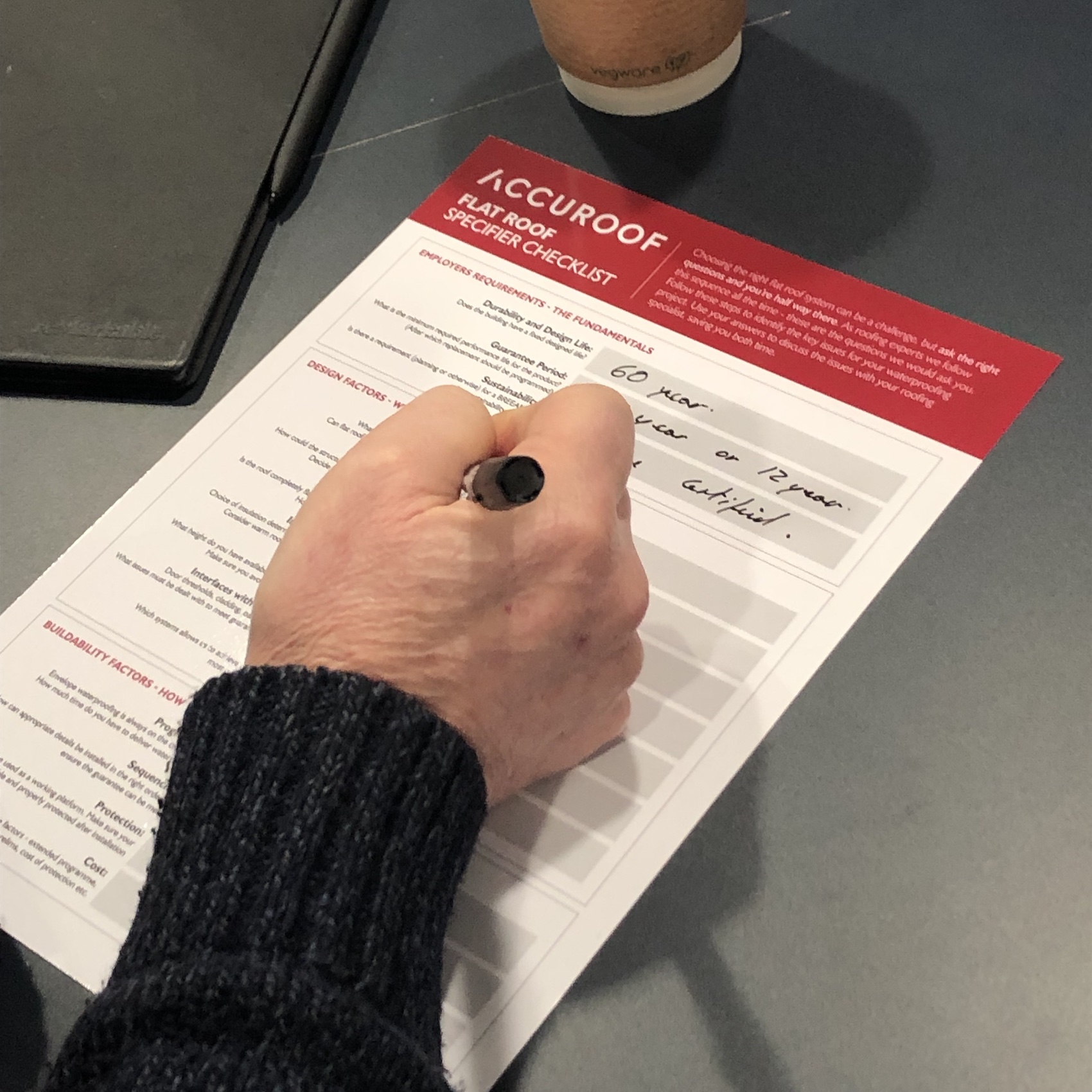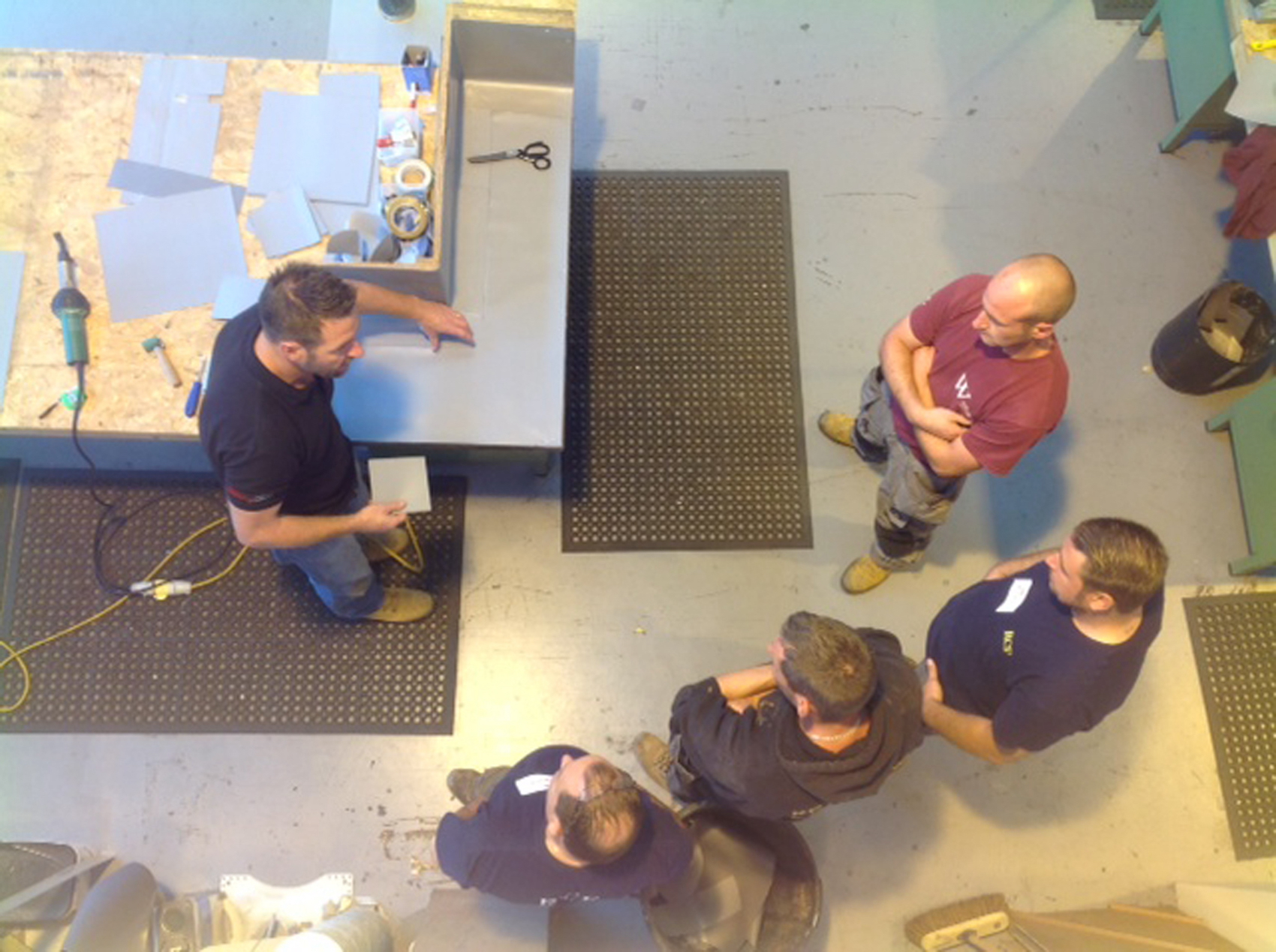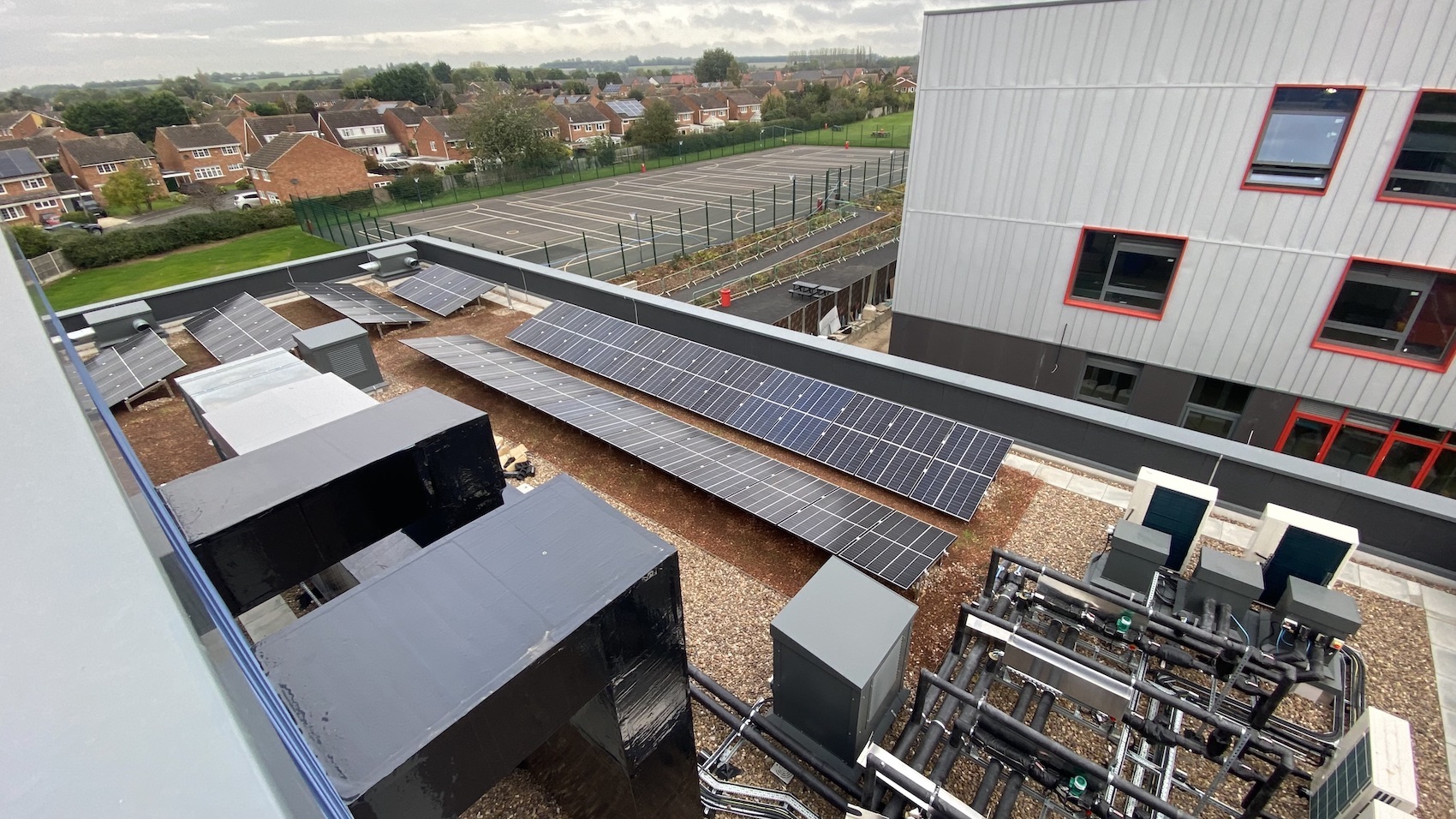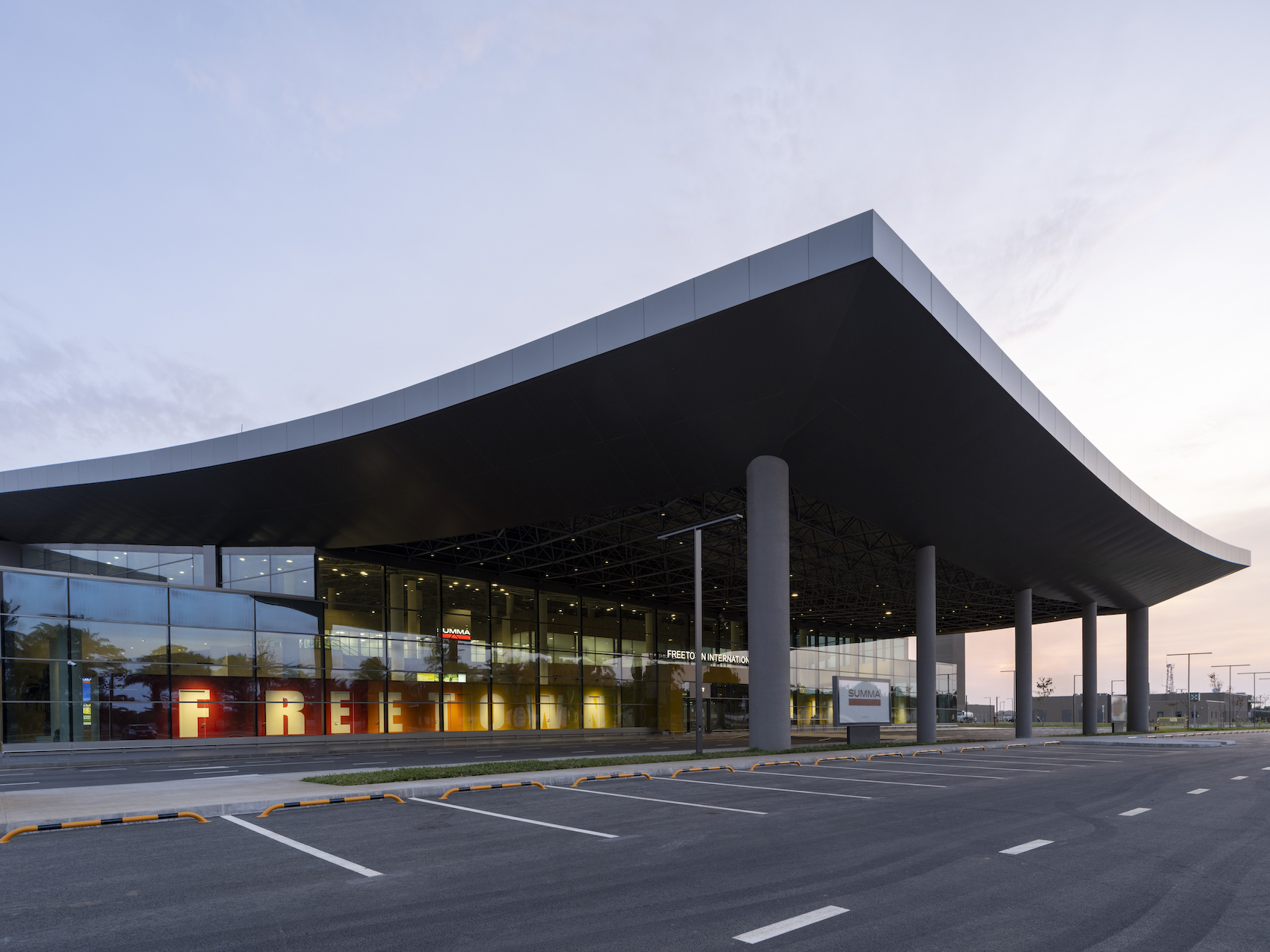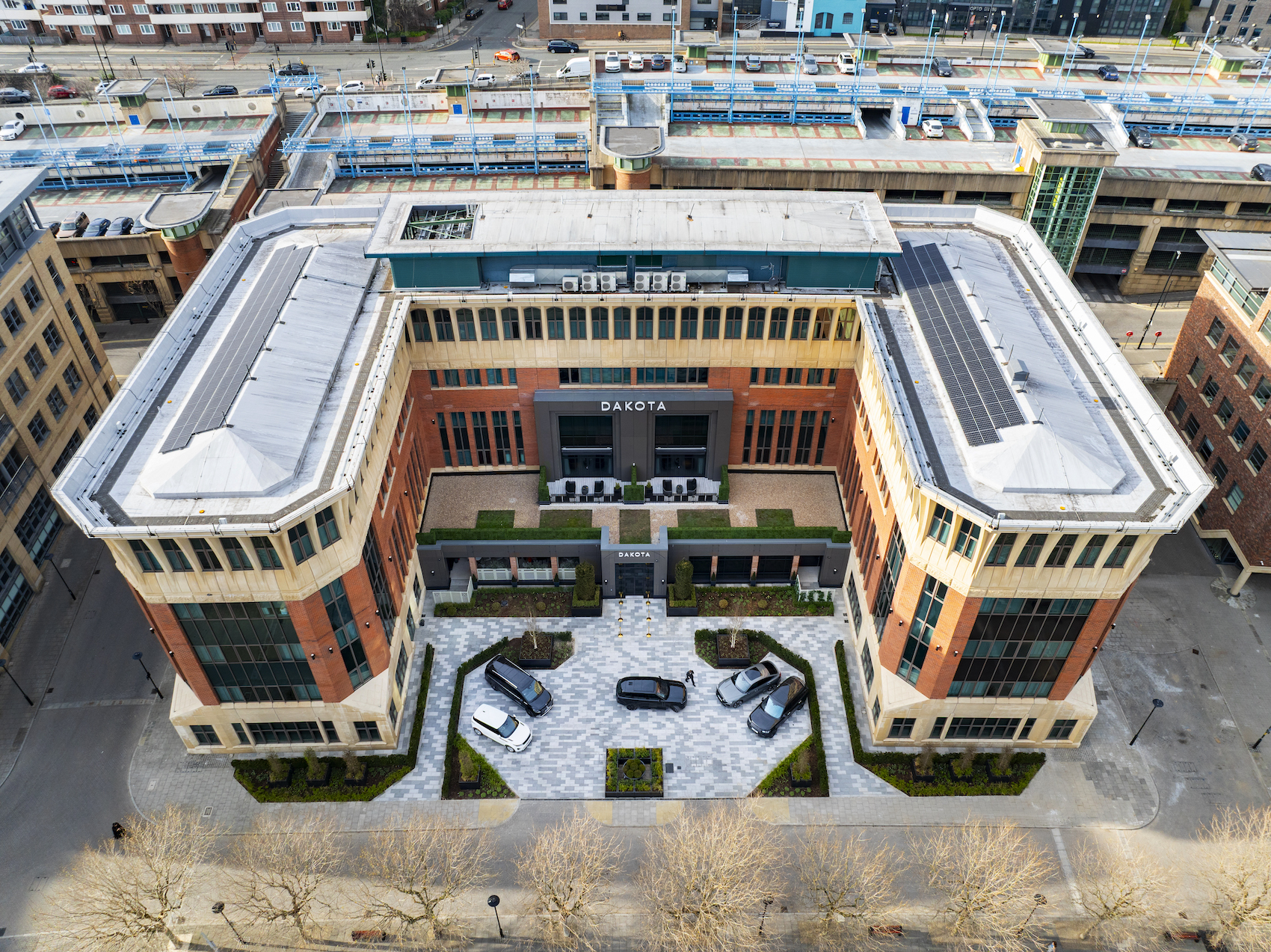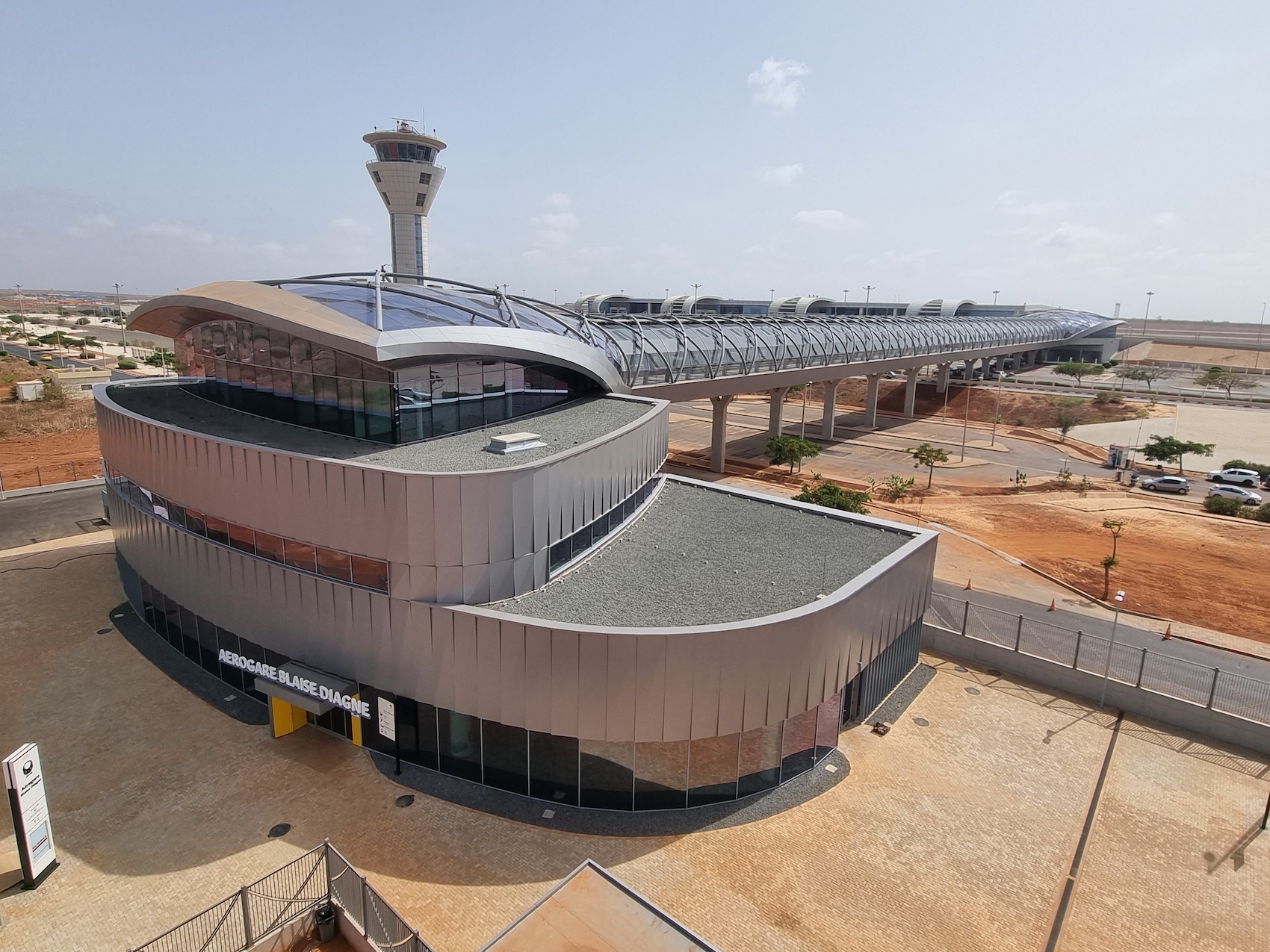AccuRoof’s Rob Edwards and Daniel Bosworth discuss how the company’s extensive portfolio of technical resources are helping architects make more confident, compliant and sustainable decisions in roof design and specification.
In association with![]()
Brighton College Performing Arts Centre, designed by krft and Nicholas Hare Architects. AccuRoof specification managers advise on a wide range of building types (photo: AccuRoof).
AccuRoof has established itself as one of the UK’s go-to suppliers of flat and pitched roofing solutions – due in part to its comprehensive portfolio, which ranges from liquid and membrane products to metals and slate. This, in combination with a highly knowledgeable technical team, means that the company can provide accurate, in-depth, and – crucially – product and system agnostic advice on roof specification for almost any project. Augmenting this tried and tested approach are comprehensive online resources that are aimed at giving specifiers the necessary technical information and insight to design roofing schemes. So what information is available? Where can it be accessed? And how does this address the challenges of designing both new-build and refurbishment projects? These questions and more were discussed by AccuRoof’s Rob Edwards (Trading Director) and Daniel Bosworth (Technical Director), in conversation with Architecture Today’s Technical Editor John Ramshaw.
AccuRoof has built a comprehensive website containing resources for specifiers and installers. What prompted this investment in technical support, and how important is it to the company’s overall business strategy?
Rob Edwards At AccuRoof, our decision to invest heavily in resources and technical support was driven by a deep understanding of the critical role that knowledge and competency plays in successful roofing projects. Roofing systems are becoming increasingly complex, with evolving materials, installation techniques, and performance expectations. We recognised that to ensure long-term performance and customer satisfaction, we needed to empower both specifiers and installers with the right tools, training, and ongoing support.
This investment is not just value-added – it’s a core pillar of our business strategy. By offering a comprehensive suite of resources, we’re helping professionals stay ahead of industry standards, reduce installation errors, and build product and system competency in specifying AccuRoof systems. It also reflects our commitment to partnership. We’re not just selling products – we’re building a community of knowledgeable, competent and skilled professionals who can deliver the highest-quality results. Ultimately, education and technical support strengthen our reputation, enhance project outcomes, and foster long-term loyalty across the value chain.
Chellaram Sports Centre in Bristol, designed by Alec French Architects. Buildings frequently incorporate a mix of roofing materials, which is where AccuRoof’s wide expertise is of great value to specifiers (photo: Speller Metcalfe).
From a knowledge perspective, what do you see as the main challenges facing specifiers today when designing or refurbishing flat roofs?
Daniel Bosworth To specify the most appropriate system you need to consider multiple factors, including service life requirements, required warranty, overall weight of the system, carbon emission data, cost, etc. The challenge is knowing the finer details of each system type. That’s where we can step in and help, by working with specifiers to provide them with the information they require for their project.
What are the key components of the resources available to specifiers on your website?
Daniel Bosworth The online resource brings together downloadable literature, project case studies, standard details, training videos, and specialist guidance documents in one place. In the Downloads area, specifiers can access everything they need to validate performance – from system brochures and Product Data Sheets to Declarations of Performance, and Safety Data Sheets. Our case study library is extensive and categorised by project type, topic, and roof system. You can filter by themes, such as drainage, fire and safety, warranties, insulation, performance and sustainability, or explore by system type – whether that’s a warm, inverted, blue, biodiverse or solar roof.
The Flat Roof Specifier Checklist is one of your most innovative and useful tools. How did it come about, and how does it work in practice?
Daniel Bosworth The checklist formalises the early-stage design conversations our technical team were already having with architects. It’s a structured design and compliance framework that helps specifiers think through the critical factors before selecting a system. It begins with project data – building type, use, location, height and exposure – then moves through roof structure and substrate, looking at whether the project is a new build or refurbishment, and assessing deck condition, falls and drainage. It captures performance requirements, such as thermal targets, acoustic needs, and fire classifications, then guides system selection – whether hot melt, liquid-applied, single-ply or built-up systems best suit the project’s goals.
The Checklist also embeds whole-life thinking around service life, maintenance, recyclability, and contributions to sustainability, such as BREEAM. Once complete, we use it to generate a bespoke NBS specification, CAD details and a warranty proposal tailored to the project. In short, it’s a collaborative tool that helps ensure every decision is properly documented, justified and aligned with current standards.
AccuRoof’s Flat Roofing Specifier Checklist is an early-stage tool that helps specifiers think through critical factors before selecting a roofing system (photo: AccuRoof).
How do your CPDs support this specification process?
Rob Edwards Our CPDs complement the Checklist by building core technical knowledge around systems and regulations. Each session runs for around 45 minutes, delivered in person or online by a regional Specification Manager, and can be tailored to a practice or live project. We currently provide four RIBA-approved topics: Roof Refurbishment: A Guide to Best Practice – updated to reflect the Building Safety Act and current regulations; What to Consider When Specifying Solar PV; A Structured Approach to Roof Specification & Design; and Specifying Hard Metals: Choosing the Right Product for the Project. The programme is refreshed regularly to reflect emerging standards and technologies, and provides a direct route to ongoing project support via the regional Specification Manager.
How do the CPDs and Checklist work together in practice?
Daniel Bosworth They are a great tool that when combined, give guidance that’s crucial for specifying the right waterproofing system for the needs of the project. The Checklist can be used as and when required, and is provided as an easy to use reminder of the information contained within our CPD’s.
The standard details library is another valuable part of your online resource. What does it include, and how is it maintained?
Daniel Bosworth The library provides downloadable junction details across the full range of AccuRoof systems: warm and inverted roofs, blue and green roofs, hard metal roofing and cladding, and natural slate. Each drawing reflects current best practice and aligns with relevant British and European Standards and manufacturer guidance. Our technical team reviews and updates them regularly so they remain compliant and compatible with the latest product and system developments.
LucentW1 Picadilly Circus, London, designed by Fletcher Priest Architects for Landsec. Fire performance, energy performance, functionality and aesthetics requirements mean that specifiers are in need of expert roofing advice (photo: Welsh Slate).
How important is transparency and data verification within these resources?
Rob Edwards It’s central to how we communicate. We operate to the Code for Construction Product Information (CCPI), which requires published data to be clear, accurate, up to date and evidence-based. This underpins specifier confidence and supports compliant decision-making.
Safe2Torch has become a key part of flat roofing practice. How do you support that through your online resource?
Daniel Bosworth We provide a Safe2Torch guide for Clients that explains the NFRC’s risk-assessment approach for hot works. It sets out steps for identifying and mitigating fire risks and includes a checklist and pledge for best practice. AccuRoof signed the Safe2Torch pledge in 2017, and we reinforce those principles in our technical advice and CPDs.
What role do your training videos play for architects?
Daniel Bosworth The videos complement our CPDs and design resources by showing how systems, such as Hydrostop AH+, SIGnature Torch on range and Ultra Protect, as well as Armourplan and rooflight installations – are applied in practice. They illustrate preparation, joint detailing and finishing, helping specifiers visualise processes and coordinate details more effectively at design stage.
Only trained and approved ARRC members are permitted to install our systems, which assures end users that work on site meets both manufacturer requirements and wider industry standards (photo: AccuRoof).
What types of training do you offer installers?
Rob Edwards Our installer training is built around ensuring competence, consistency and compliance across every system we supply. The cornerstone of this is the AccuRoof Registered Roofing Contractor (ARRC) scheme. Only trained and approved ARRC members are permitted to install our systems, which assures end users that work on site meets both manufacturer requirements and wider industry standards.
Training is delivered through a network of six regional centres across the UK, offering hands-on sessions covering liquid-applied, single-ply, hot-melt, green and blue roof systems. Courses are led by our technical team and aligned with guidance from Single Ply Roofing Association (SPRA), Liquid Waterproof Roofing Association (LWRA) and the National Federation of Roofing Contractors (NFRC). For existing members, refresher sessions are available on new products and installation techniques.
When roofs become an important element of your built asset, multiple options are available to maximise their usefulness (photo: Eco Green Roofs).
Finally, what’s next for AccuRoof’s learning programme?
Rob Edwards Looking ahead, the next phase of AccuRoof’s learning programme is all about accessibility, personalisation, and innovation. We’re expanding our digital platform to make training more flexible and available on-demand, so professionals can access the content they need, when and where they need it.
We’re also introducing more role-specific learning paths, designed to meet the unique needs of architects, specifiers, installers, and contractors. This includes advanced modules, real-world case studies, and interactive technical support tools to deepen understanding. Ultimately, our goal is to create an industry-leading learning package that not only supports our partners today but also evolves with them as the roofing landscape continues to change.
Contact Details
If you require design assistance on a roofing project, please call 01509 505 714, email, or visit the AccuRoof website.




